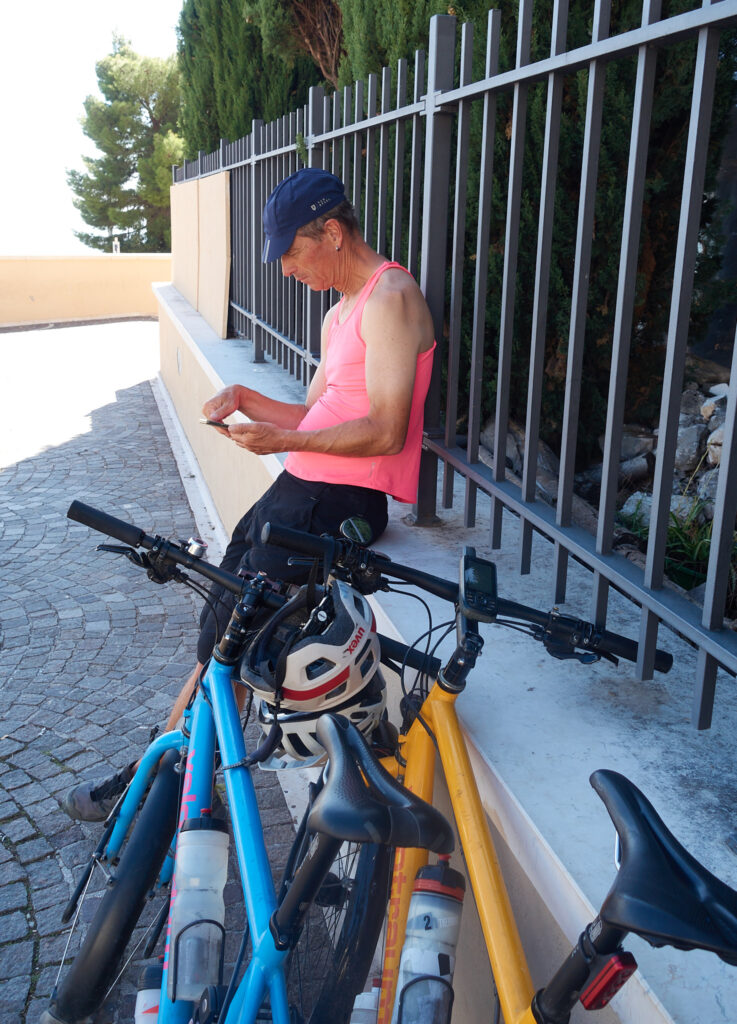The final stage from Manfredonia to Termoli is a worthy one, 120 kilometers and 850 meters in altitude. We head north and leave the Gargano to the west. At 25 degrees celsius, a decent wind blows diagonally from the side. We cycle along small, quiet roads through farmland. Olives, vines, fallow land, cabbage, leeks, fennel. We pass more tractors than cars. After 50 kilometers a flat tire, after 60 kilometers a Coke in the bar at a petrol station. After 90 kilometers we actually find water in a small town. The stores are closed. It is siesta time between 1pm and 5pm. There are two more flat tires (we have not had one for months). The nasty macchia sticks its thorns through our coats. The last 20 kilometers go smoothly. We buy two liters of orange juice and just drink it down.
In Termoli we have time for a last coffee at the harbour and in the town we have antipasta and a beer. La dolce vita until the end.
We have cycled 9,710 kilometers through sixteen European countries this season,. And 3,040 kilometers by public transport (2,430 km Flixbus, 450 km ferry, 160 km train). Time for a review in five trilogies and three acts each: The individual countries in a trilogy are as different as brothers and sisters can be.
Benelux – Luxembourg, Belgium, Netherlands (Protour)
Scandinavia – Norway, Sweden, Finland
Norway’s spectacular nature is stunning. Experiencing it by bike is unique. Supplies are not a problem. There are plenty of shopping opportunities in this sparsely populated country. Thanks to the 24/7 stores that operate without staff. The happiest people live in Finland, open-minded, freedom-loving and enjoying every moment of the Finnish summer. That is contagious.
Baltic States – Estonia, Latvia, Lithuania
The friendly Latvians score points in the Baltic States.
Visegrad – Polen, Slowakei, Ungarn
Poland scores particularly well with its cities. Warsaw and Krakow are well worth a visit. Also Iris’ Feel Free Camping in the middle of nowhere. We cannot recommend Poland as a touring country. Slovakia impresses with its beautiful national parks and farm campsites run by the Dutch. Hungary has the Danube Cycle Path, which rarely runs along the Danube.
Balkans – Croatia, Serbia, Bosnia
Bosnia is by far the most exciting country with its terrible history of the Bosnian War from 1991 to 1995 and the different cultures, the clearly visible divisions in the country. Where Bosnians, Croats and Serbs live in one country. In Bosnia we find great hospitality, care, helpfulness and the most adventurous railroad cycle path.
We will not forget…
… the teacher from Estonia who is on vacation with us at the campsite in Sigulda/Latvia with his family. It is probably a long-distance trip for him. He is visibly touched by our life plan.
… the municipal representative who collects the fee of €5.20 for camping in the public park. As a welcome gift, she brings a bag of the best farm apples. Apples seem to be the fruit of the Latvians and Lithuanians who love to share them. It makes Rolfi’s heart smile.
… the two ladies who each run a litte store in the Latvian countryside. One sells us a cup of instant coffee, the other a yogurt and a mini dessert for 25 cents which she finds delicious.
… the couple of Leipzig who traveled to Russia and St. Petersburg with their dog. They had a valid visa, but still had to sacrifice fifty hours with all kinds of hassle to get into the country. Then they discovered that it is absolutely not a camper country: no campsites, no electricity, etc. We can only marvel at their curiosity and thirst for adventure.
… the thin plastic bag that we forgot to put in with fruit and vegetables. We pay for it at the self-checkout: 0.01ct. The barcode demands it. 0.01ct is also the price for a kilo of buckwheat at Maxima supermarket.
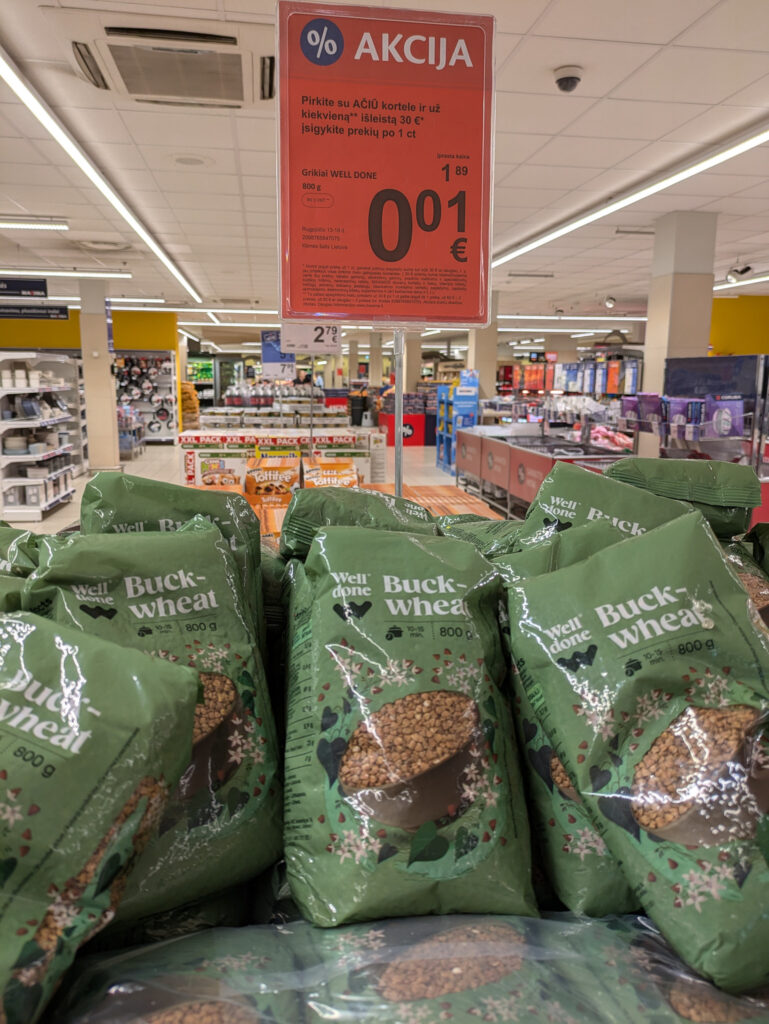
… the drivers in the Baltic States who become animals behind the wheel. On the gravel roads, they are a dusting. They also pollute the environment with their old cars imported from Germany and Sweden.
… the very good cell phone reception in Scandinavia and the Baltic states. A disaster in Poland: unreliable internet reception with mobile data and WiFi. In the end, the only place left to send out our report on time on Saturdays is McDonalds.
… Dominikas and Pius who dressed our hair in Vilnius and gave us an insight into their lives. We then paid them the price we pay in Germany. They are probably still shaking their heads about it and cannot believe it.
… the differences between food prices in Norway and Poland. 20€/kilo cherries here, 30ct/kilo loose potatoes there.
… the differences between rich and poor countries, in the middle of Europe.
… the happy angler with his catch.
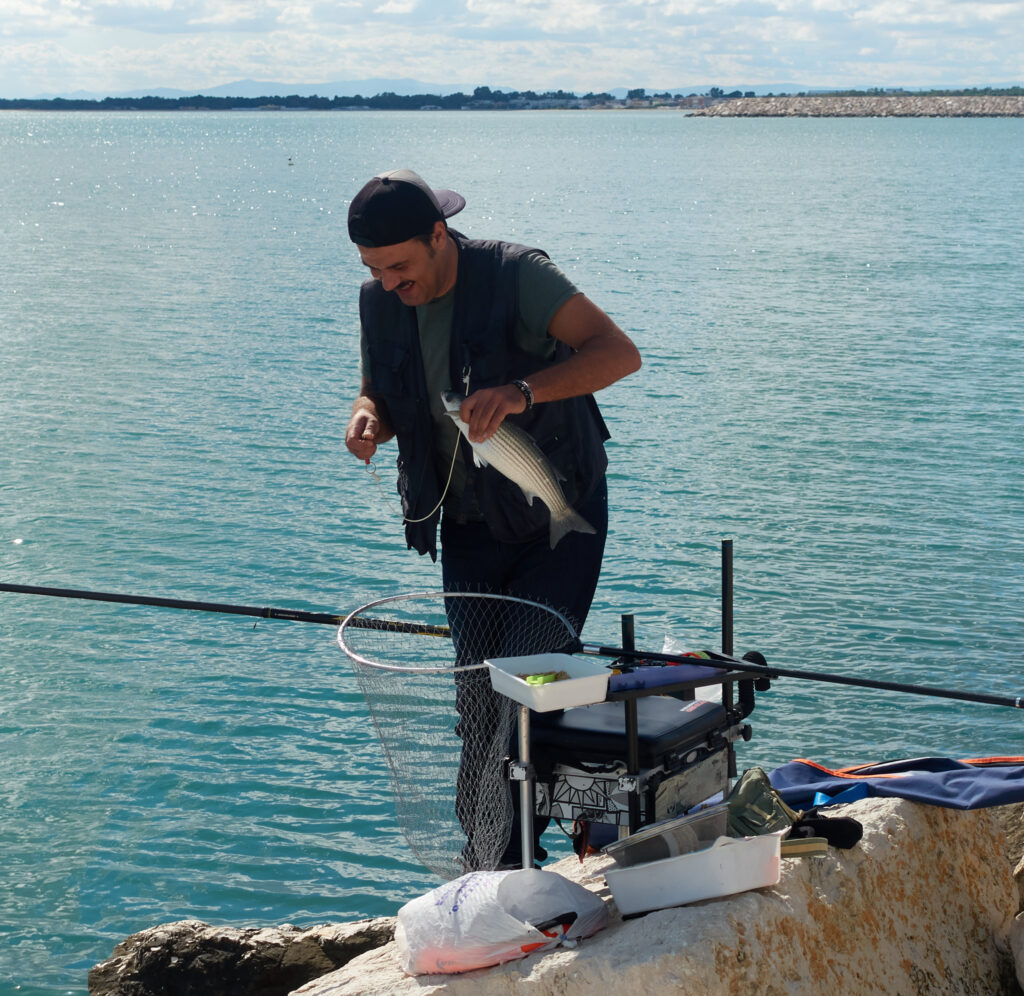
… the construction site in Bosnia secured with a grave light. If it is overlooked, the bereaved can use it at the cemetery.
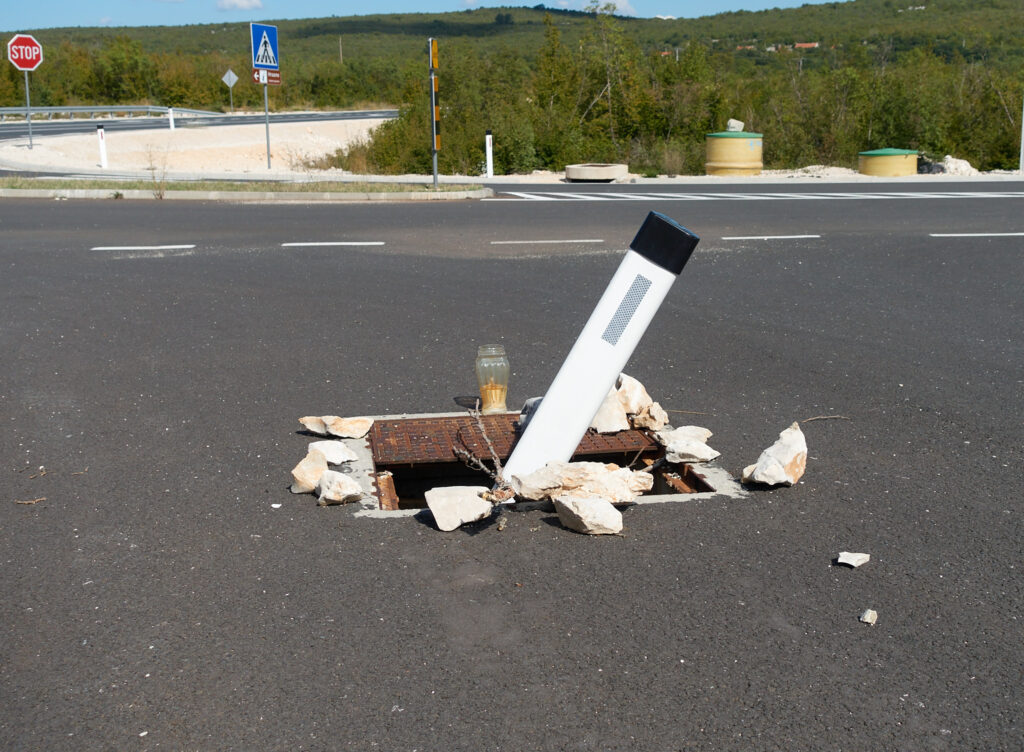
In 2019, when we set off for the first time, Rolf told everyone who asked that we were going all the way to Finland via Greece. The handlebars of the bike pointed south. We did not make it to Finland back then. When we arrived in Tallinn in mid-August 2019, the summer ferries were already closed and we traveled directly to Stockholm without a detour.
In 2024, five years later, we are finally in Finland and Rolf tells everyone that we want to get to Greece. Just before Dubrovnik, that is the plan. But in Bari we decide against another long ferry trip and spend the end of the season in the southern Adriatic (which is so much more beautiful than the ‘Teutonic grill’ in the north).
It is the end of the season on the Gargano and we are lucky that there is still some time before there is a place for us and our bikes on the Flixbus. After a few days on the beach, we get on our bikes and enjoy sporty day trips without luggage, up and down the mountains, pedaling across the lonely plateaus of late summer where flocks of sheep graze and cowbells ring, before stopping for an espresso in the next village.
We do not want to withhold our Tour of the Saints from you. We cycle to two holy sites. First, we head for the tomb of Padre Pio in San Giovanni Rotondo. Padre Pio lived in the 20th century and had stigmata on his hands like Jesus on the cross. He is very controversial (see Wiki article)- he probably inflicted the stigmata himself with acid. Nevertheless, the Italians are crazy about him. The previously tranquil town now has a hundred hotels for the four million pilgrims every year. Pretty weird. We continue along a beautiful route on the Gargano plateau to Monte Sant’Angelo and the pilgrimage church dedicated to St. Michael the Archangel. This is already more impressive. Through the portal, we climb deeper and deeper into the grotto carved into the rock with many animated people. You should definitely visit this place, if you are in the area.
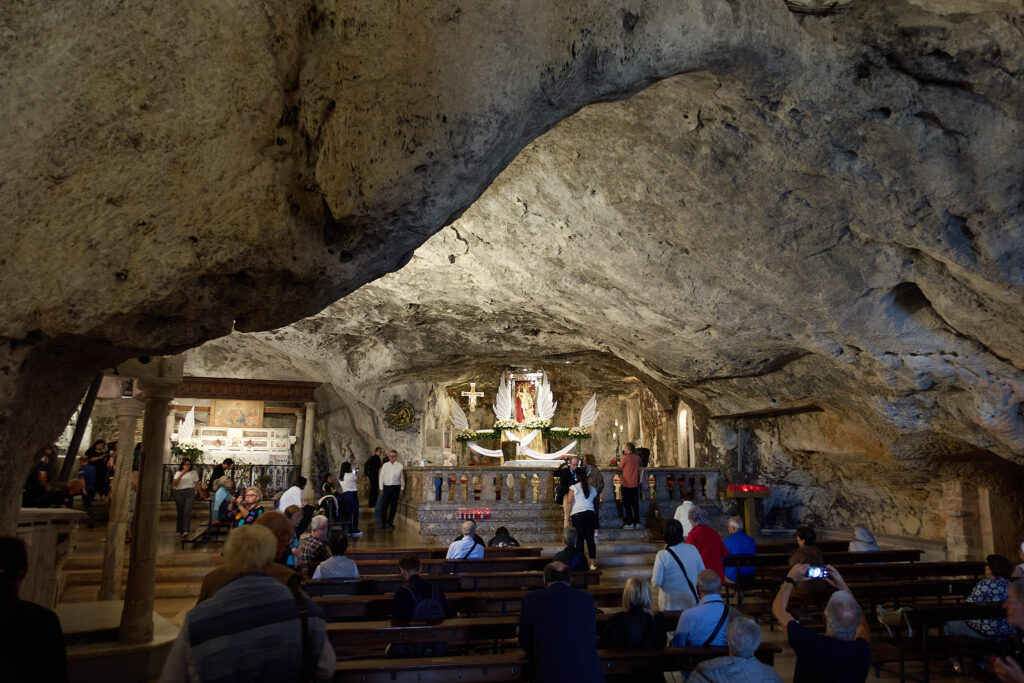
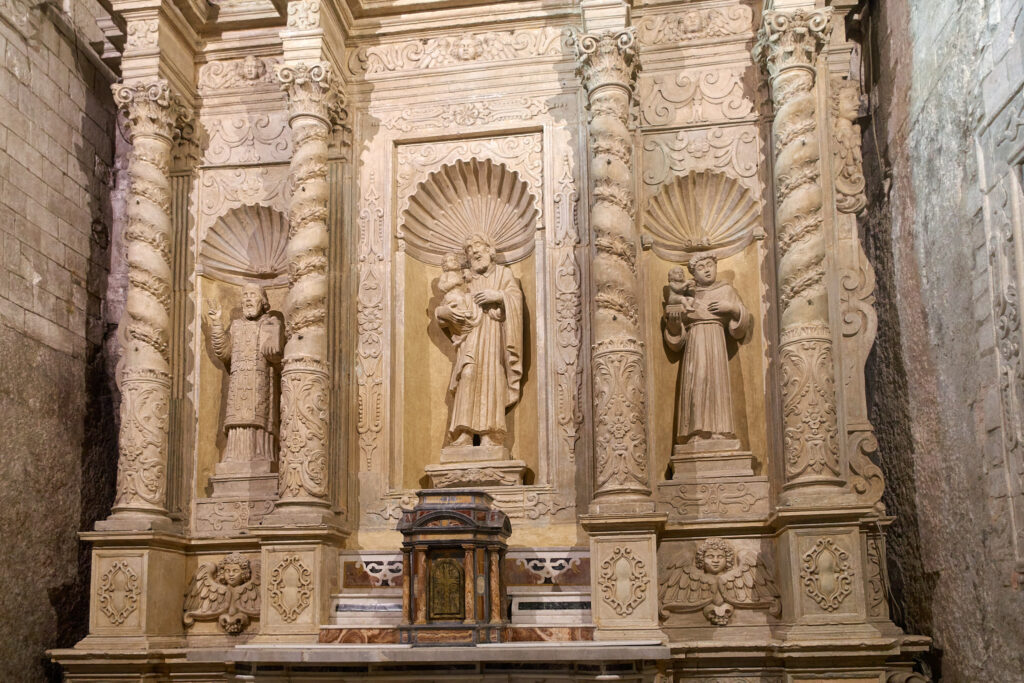
After visiting the grotto, Astrid’s persistent lumbago is almost gone. Incidentally, Astrid is not perfectly dressed for the visit to the two holy sites in her pink tank top. So we take it in turns to swap shirts in front of the churches.
